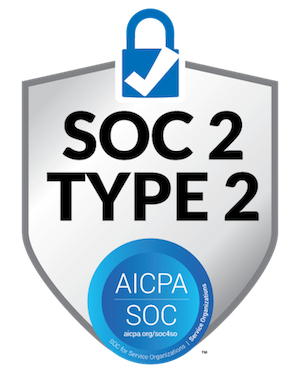
How to Use International Postal Address Standards or Formats to Improve Deliverability?
Sending international postal mail is always a headache, especially for businesses. This is because companies have to send out international mail in larger volumes than personal mail sent by individuals. In comparison, sending personal postal letters to friends and family is relatively easy.
Personal letters or postal mail pieces are limited to one or two postcards, and that too during Christmas and New Year. Furthermore, there are no monetary consequences if the personal letters arrive late.

But business communication is serious, and late mail delivery could lead to complications. Ensure you have the correct international address format to avoid the repercussions. You are likely reading this because you don’t want to face such consequences.
Another noticeable concern for businesses sending international letters is that they might need to send them to different countries. As you can guess, the postal format in other countries can vary. So today, we will help you understand the international address format and its specialties.
How do we intend to do that?
We aim to explain the unique nature of addresses in every country globally. This way, you won’t have to repeatedly search online to find a suitable international address format for your business mail.
Why Is It Important To Use The Correct International Address Format?
We have repeatedly said that business mailers must have the correct international address format. However, we have not yet mentioned why having a valid foreign address format is critical.
Proper international address formats ensure that mail arrives on time. Without the correct foreign address format, there is a chance that your mailer might go undelivered.
Although unlikely, it is still possible for your postal mail to go undelivered due to the incorrect international address format. However, undeliverable postal mail is the worst-case scenario in this situation. Your mailers may get significantly delayed due to some errors in the foreign address format.
Canada Post Requirements for The International Address Format
We need to clarify a few things before discussing the requirements of an international address format. First, you should know that the United States Postal Service or Canada Post can not verify if international addresses are valid.
Therefore, you must verify the address with the recipient or use a third-party address verification tool. In addition to this, you can check whether the formatting and postal code are correct via the Universal Postal Union website. However, this data may not be available for all countries.

What Canada Post Recommends When Writing International Addresses
The Canada Post has a general guideline that you can follow on how to write international addresses. Of course, you cannot guarantee the foreign address format obtained through these guidelines is accurate.
However, it can still help you minimize errors. So, let’s look at the guidelines from Canada Post for writing international address formats.
- Use all uppercase letters for international addresses.
- The international address format should not have more than five lines.
- You should write the address in ink or type it.
- Never use a pencil to write the address because they are unacceptable.
These points are only some general guidelines for writing international addresses. There are several other requirements that you must satisfy before you can send direct mail to international addresses via Canada Post, and they are:
Use Addressee’s Full Legal Name
When writing an international address format, you should use the addressee’s full legal name on the mail piece.
In other words, use the addressee’s legal name corresponding with their government-issued ID.
The addressee’s full name must include their first name, middle initial (if applicable), and last name.
For example:
Peter Raynold
100 E MAIN ST
PHOENIX AZ 85123
USA
Use Roman Letters and Arabic Numerals
Another requirement when writing international addresses for postal mail is to use Roman letters and Arabic numerals. Additionally, make it a point to place the address lengthwise on one side of the mail piece.
Use Interline Translation for Specified Characters
When you write foreign addresses in a different language, you must provide interline translations in English. The translation includes the recipient’s full name and their complete postal address on the envelope.
Some major languages or characters for which you need to provide the English translation include the following:
- Russian
- Greek
- Hebrew
- Cyrillic
- Japanese
- Chinese or Mandarin
If you don’t know the English translation, use Roman characters (printed or script) for the foreign language words.
Writing the Country Name on The Address
When writing the address for an international mail, you must mention the complete country name on the last line of the address block. In other words, never use abbreviations of a country name in a foreign address format. It is best to use uppercase letters for writing the country name too.
Writing Foreign Postal Codes
Most people or businesses that send international mailers are often concerned about where and how to write the postal code.
The postal code is perhaps the most crucial part of the international address format.
You must place the foreign postal code on the line above the country name. However, some countries prefer the postal code to be positioned right after the addressee’s name. Similarly, some countries have postal codes before the city/town name.
So here, the best bet for businesses is to use an address validation API like PostGrid to validate their international addresses. However, PostGrid doesn’t stop with just address validation. You can avail yourself of a lot more using this uniquely designed tool. It also standardizes the addresses and fills in the postal codes if the existing one is incorrect or incomplete.
 Also Read: Fuzzy Address Searching
Also Read: Fuzzy Address SearchingPrice of Sending International Postal Mail
Unlike what you might think, the Canada Post does not keep a record of Foreign Postal Codes. Similarly, Canada Post does not track other specific information, such as the postage price for mail pieces from other countries.
So, if you were hoping to get help from Canada Post to determine international postal codes, you should think again. However, the postal service can calculate the postage rate for sending an international mailer using the country’s name.
You should contact the destination country to find their postal code information. But businesses can’t just go ahead and call up their international customers to check their postal code. Imagine getting a call at night or during a meeting because someone wants to check your postal code.
Such experiences with your brand could potentially jeopardize your relationship with the customers. No matter how you look at it, your best option is to use address validation software. It is easy, convenient, and doesn’t require you to bother your customer for trivial matters like a postal code check.
 Also Read: Canada Postal Code Lookup
Also Read: Canada Postal Code LookupCanada Post Return Address Requirements for International Mail
The first thing you need to know about return addresses on international mail is that Canada Post highly recommends them. As far as Canada Post is concerned, every international mail poses a potential security concern.
The primary reason a return address is so crucial for international mail is security concerns. However, Canada Post has not made it mandatory to include return addresses for every international mail piece. But the following two types of mailers are “required” to provide a return address.
- Mail pieces that bear a customs form
- Bulk mailings
Mail pieces Bearing Customs Form
Customs Forms are crucial documents that foreign customs authorities use to clear mail for entry into their country and, when appropriate, to assess duty and taxes. When you mail a package to another country, you must mention the contents and value of an item on the customs form.
Bulk Mailings
Businesses often use bulk mailings because it enables them to get discounts on their direct mail campaigns. However, it can add up to a significant amount in the long run.

How Many Return Addresses Can You Include, and Where to Place Them?
You may consider including two or more return addresses to ensure you get the return mail. However, refrain from this practice because it can confuse the postal employees.
Writing more than one return address can make sorting harder for postal employees. Therefore, even the single return address you provide must not confuse anyone. To avoid such confusion, you must place the return address without affecting the clarity of the destination address.
The return address should not interfere with the service labels and notations, like postmarks. Apart from this, you must ensure that the return address has all the required details filled in, including:
- The sender’s full legal name
- The complete return address
- Use only Roman letters and Arabic numerals
Also, you should know that the return address should not include any initials. However, there is an exception if you have adopted a trading name.
The Sequence of Information in General International Address Format
Indeed, the international address format is different for every country.
However, Canada Post provides a sequence of information for you to use when writing the destination address. Please refer to the table below to understand how to write the destination address per Canada Post’s recommendation.
| Line 1: Addressee’s Full Legal Name | Use uppercase letters to write the addressee’s name. It is usually the standard format for almost every country to have the recipient’s name first in the address format. |
| Line 2: Street Address/Post Office Box Number | The second line of the international address format should include the street address of the recipient. Sometimes the recipient may have a PO Box address. In that case, you should write the PO Box number instead of the street address. |
| Line 3: City/Town/Other Principal Subdivision | The third line of the international address format may contain the city, town, or other principal subdivision in which the address is. These main subdivisions could be provinces, states, counties, etc. However, the postal code may precede the city/town name in some countries. |
| Line 4: Country Name | The last line of the international address format almost always contains the country name. Here, you should ensure that you use the uppercase letters. |
International Postal Address Standards For Major Countries
As we said before, different countries may have preferences for the address format they use. Although businesses may target customers all around the globe, most clients for Canadian companies come from a group of countries.
The UK and Australia are among the primary recipients of direct mail from businesses from the US. We have provided examples of foreign address formats for sending direct mail to these countries.
How To Write an International Address for Sending Mail in Canada
A significant portion of all mailers Canadians send is within Canada.
The proximity of Canada, both in terms of location and relations, makes it easy to send direct mail nationwide. Canada Post even goes so far as to offer twice the weight limit for international mailers using a Global Forever stamp.
Example of International Address Format For Canada
DWIGHT SCHRUTE
1122 PINE STREET
ALBERTA AB T2P 3Z3
CANADA
When writing a direct mail addressed to Canada, there are a few things you need to keep in mind. Please read the points below to understand what you should and shouldn’t do when writing a Canadian address.
- Use English or French: Make sure that any Canadian Address you write on the mailer has the complete Canadian address written in English or French.
- Add a Space Between the Province Abbreviation & Postal Code: Ensure spaces between the province abbreviation (AB) and postal code (T2P 3Z3).
- Take Safety Measures: You may place a card containing the names and addresses of the sender and recipient inside the parcel.
- Poste Restante: It is French for “general delivery.” Your mailer must contain “Poste Restante” with the addressee’s name for general deliveries.
How To Write International Address For Sending Mail to the UK (United Kingdom)
The UK or the United Kingdom consists of different countries, including:
- England
- Scotland
- Wales
- Northern Ireland
However, Royal Mail is the official postal service provider for the whole UK.
And so, Royal Mail decides the standard format for the addresses within the United Kingdom.
For example, Royal Mail specifies that you must leave at least the bottom 5/8 inch of an envelope or postcard blank.
Why? You may ask. This space is for the Royal Mail’s reading and sorting machines to print the barcodes for the mailers.
Example of International Address Format For The UK
- WALTER WHITE
49 MOONSTONE STREET
LITTLE LINFORD
MK19 6EA
UNITED KINGDOM
Much like the ZIP codes in the US, every house /business in the UK also has a unique postal code. The Royal Mail can efficiently and quickly deliver mail having a postal address containing the UK postcode. You need the following elements in a UK address to ensure fast and accurate delivery.
- Addressee Name: The addressee’s name is the first element you should include in the direct mail address you send to a UK address. However, the addressee’s name may not be applicable everywhere. For example, you can address the manager of a company with “The Manager.”
- Company/Organization: The next address element you should include is the company or organization’s name. However, this element is also not applicable everywhere. Ignore this element unless you are not sending mail items to a business address.
- Building Name: The building name is necessary for the address. You must include it in your international mail. Not adding the building number can lead to the return of your mail piece. However, you can also use the building/house number of the building instead of the name.
- Building Number and Name Of The Thoroughfare: The building number is essential for the address format. The mail service can use the building number to deliver the items even if the building name does not appear in the address. Additionally, the address should also contain the thoroughfare’s name. (Note: A thoroughfare is a primary passage or way that goes through regularly trafficked areas that people use as a transit route)
- Locality Name: You need not have the locality name in the address unless a similar road name exists within the vicinity of the Post Town area. The locality name helps you rectify any confusion. It ensures that there are no unnecessary delays in delivering your direct mail.
- Post Town: Your direct mail must specify the post town you want to send the mail. You should also note that the post town in the international address format must use uppercase letters. Take a safer approach by using uppercase for the complete address.
- Postcode: The postcode in Canada is similar to the postal code in Canada. They are an unavoidable part of the international address format. Hence you should ensure its accuracy. You can also use a postal code validation tool to ensure you have the correct code.
Exceptional Cases in the UK Addresses.
Some exceptional cases or oddities are associated with the addresses in the UK. Although none of these peculiar cases had a significant consequence, it is still worth knowing about them. So, listed below are some of the odd things you should remember when addressing a mailer to the UK.
- The Royal Mail prefers its mail pieces to have the return address on the back of the envelope.
- If the address includes a locality line, you should write it between the street address and the city/town name.
- The postal addresses you want the Royal Mail to process should not contain full stops or periods.
How To Write International Address For Sending Mail to Australia
Australia Post is the official postal service provider in Australia. You may use the general address format guidelines from Australia Post to send international mailers from outside Australia. You can find the general addressing guidelines from Australia Post here.
The general addressing guidelines from the Australia Post are for mailers sent within the country. However, you may use the same format to make the mail processing fast once it reaches Australia Post. So, all you have to do is write the country name (AUSTRALIA) as the last line of the address.
Example of International Address Format For Australia
Mr. Michael Scott
119 McLaughlin Road
MOORE QLD 4306
AUSTRALIA
Although Australia is a relatively giant landmass, it has only six states. So, it is easy to keep track of the state abbreviations you need to use in the direct mailer, even if you process it manually. The table below shows all the state or territory abbreviations in Australia.
| State/Territory | Abbreviation |
| Australian Capital Territory | ACT |
| New South Wales | NSW |
| Northern Territory | NT |
| Queensland | QLD |
| South Australia | SA |
| Tasmania | TAS |
| Victoria | VIC |
| Western Australia | WA |
Similarly, there are standardized abbreviations for the type of streets, roads, alleys, etc. Some popular abbreviations you might find helpful are in the table below.
| Types of Streets/Roads/etc | Abbreviation |
| Alley | ALLEY |
| Arcade | ARC |
| Court | CT |
| Drive | DR |
| Avenue | AVE |
| Highway | HWY |
| Lane | LANE |
| Road | RD |
| Square | SQ |
| Street | ST |
There are even more abbreviations that you can see in an Australian address. As you can guess, manually managing these abbreviations can be a disaster. You would have to check the abbreviation for each postal address, go through the list of acronyms, and then write it down.
This manual process can be highly time-consuming and prone to errors. Hence, it is always advisable to use an address standardization and validation system like PostGrid. Tools like PostGrid can standardize your addresses and add the correct abbreviations.
Multiple Address Formatting Options
One thing you will notice about Australian addresses is that they have multiple formatting options. The formats may relate to unit, suite, or apartment number. For example, imagine you are sending a mailer to an apartment address.
You can separate the individual unit or apartment from the building number. However, it won’t work if you are dealing with an address that belongs to one of the floors in the building. It is worth noting that the house/property number in Australia can include a number range.
Use an Address Validation API For Accurate Foreign Address Format
Your best bet to ensure h data quality and accuracy for your mailers is an address validation API. The thing about address validation APIs like PostGrid is that their applications are not limited to validating addresses.
Systems like PostGrid standardize the addresses before it validate their accuracy. The standardization aligns the postal addresses you have with the ones in the official address database of the country. The postal addresses you push through PostGrid are already in the standard format.h
But you know what is even more remarkable about using a tool like PostGrid? It provides address lookup services for over 245 countries. So, that means you can send direct mail to every big and small country in the world without even breaking a sweat.
Conclusion
International postal address standards can be complex since every country uses a different format. You can’t possibly keep track of every aspect of the foreign address format of numerous countries manually.
An advanced solution like PostGrid can quickly and easily standardize the address to a standard format. With a tool like PostGrid, you can validate the accuracy of addresses and ensure their deliverability.
PostGrid’s system lets you standardize addresses from more than 245 countries. It means a tool like PostGrid can get your job done in seconds. Doing it in-house would require extensive research, time, and personnel.
To top it all off, you can even automate the direct mail process with the help of solutions like PostGrid. So, if you choose the traditional way of sending international mail, you are only holding yourself back with a slow process. Instead, you can optimize and streamline your direct mail process with PostGrid.
Request a demo now for more details on international postal address formats and how we help clients use them!










